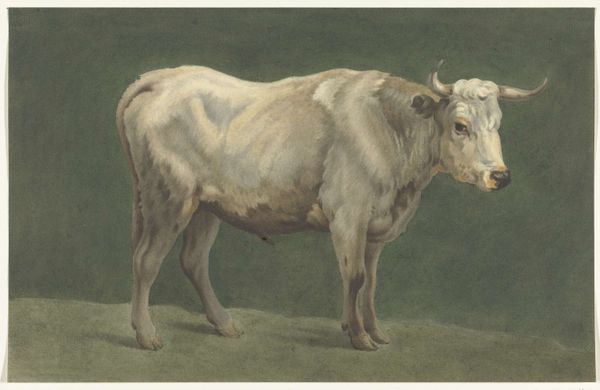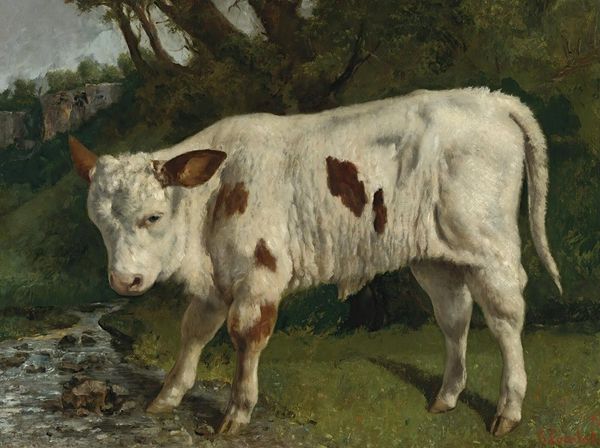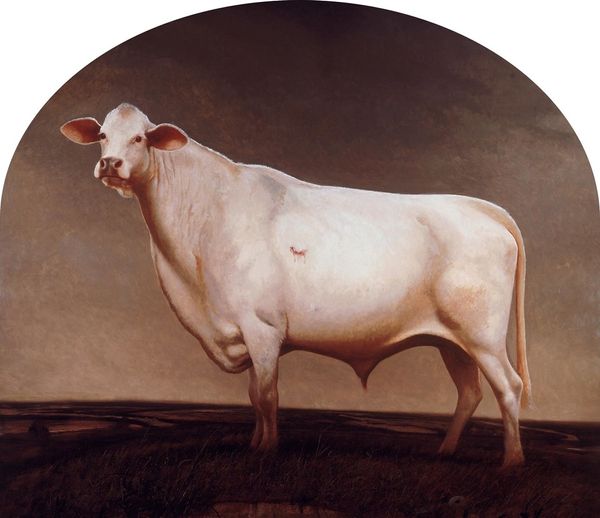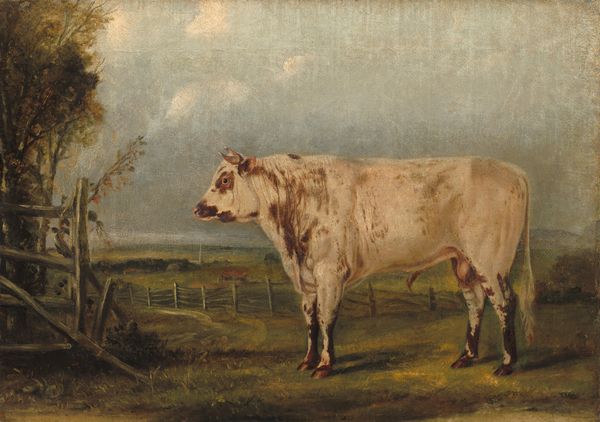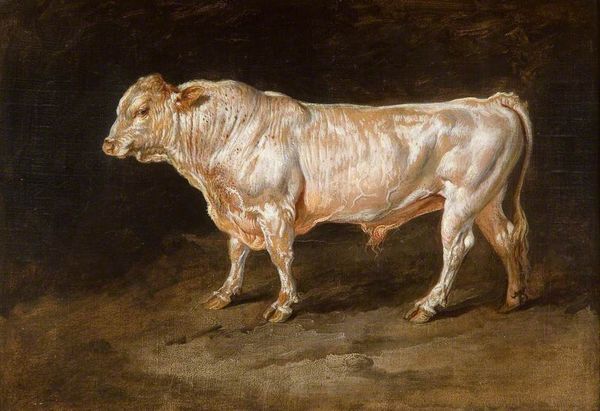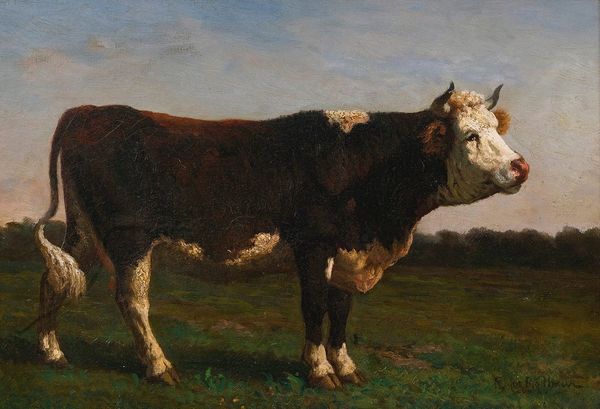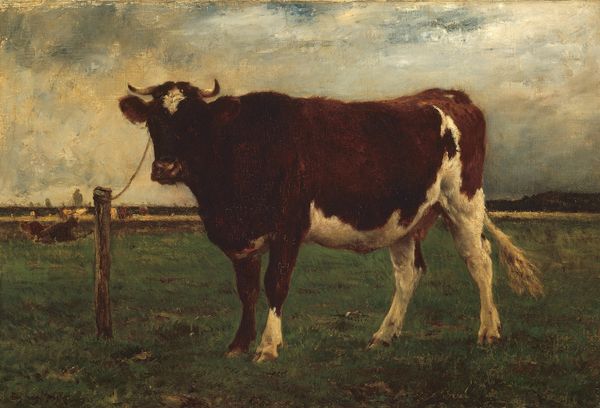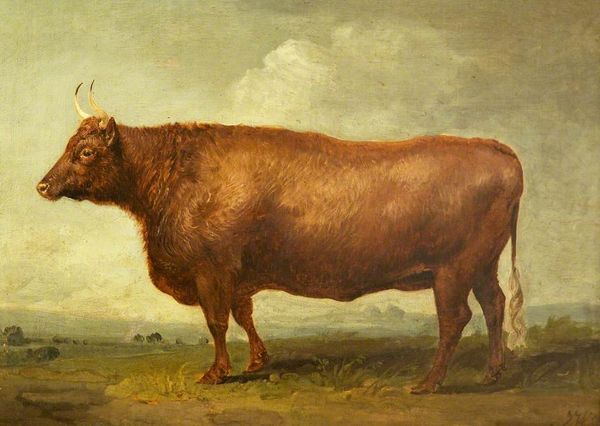
painting, oil-paint
#
portrait
#
painting
#
oil-paint
#
landscape
#
oil painting
#
portrait head and shoulder
#
underpainting
#
animal portrait
#
animal drawing portrait
#
realism
Dimensions: height 42.9 cm, width 52.4 cm, thickness 2.5 cm, depth 9.2 cm
Copyright: Rijks Museum: Open Domain
Curator: Standing before us is Jacques Raymond Brascassat's "Study of a Bull," estimated to have been completed sometime between 1830 and 1867, an oil painting rendering of remarkable realism. Editor: Oh, wow, he's majestic, isn’t he? Almost stoic. Like he knows all the secrets of the pasture, all the gossip in the herd. The soft lighting makes him look like he's posing for a royal portrait! Curator: I see him more as an embodiment of pastoral power dynamics. Brascassat was celebrated for his animal paintings, tapping into a renewed 19th-century interest in agrarian life, but one has to consider how these idealized images glossed over the realities of labor and class divisions in rural societies. These paintings played a role in constructing narratives around land ownership and the perceived nobility of agricultural pursuits. Editor: I get that, the political undercurrent, but still... there's something genuinely moving about the way the light catches the bull’s flank, highlighting those muscles rippling beneath the skin. I can almost smell the hay and hear the lowing. Curator: And it’s vital we unpack why those sensations resonate with us. The artistic skill is undeniable; look at the detail in the animal's eye and the textured application of the paint suggesting weight and presence, but what does that say about us as viewers, who might unconsciously valorize specific social or economic relations tied to the image? Editor: True, it is a loaded image historically, but isn't it possible to appreciate it on a visceral level, too? To acknowledge the sheer beauty and the painter's mastery of capturing the animal's essence? Maybe that's too simplistic? Curator: Not simplistic, human. However, viewing this painting through an intersectional lens—considering how factors like gender, class, and race influenced both its creation and reception—gives us a much fuller, more truthful understanding. It acknowledges the art's participation in larger, often unequal systems. Editor: It’s always so revealing looking through both lenses, actually, both what something did mean and what it could mean. Thanks!
Comments
No comments
Be the first to comment and join the conversation on the ultimate creative platform.
